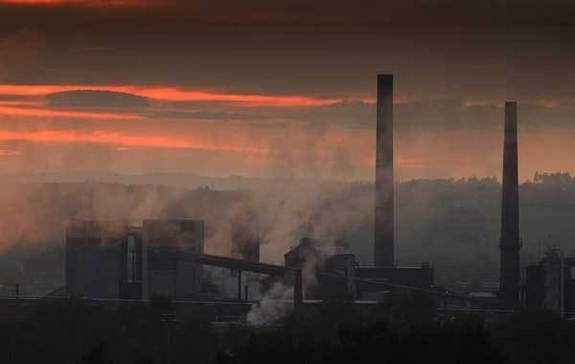Nearly 2 Million Kids Die from Pollution Each Year

More than a quarter of deaths in children under age 5 worldwide are tied to polluted environments, such as contaminated water and smoggy air, according to a new report.
The report, from the World Health Organization (WHO), found that each year, 1.7 million children under age 5 die from causes attributable to polluted environments. That's about 26 percent of all childhood deaths in that age group in 2012.
"A polluted environment is a deadly one — particularly for young children," Dr. Margaret Chan, the director-general of WHO, said in a statement. "Their developing organs and immune systems, and smaller bodies and airways, make them especially vulnerable to dirty air and water."
For their body size, children consume more food, drink more water and breathe a greater volume of air than adults, WHO said. In addition, children are more likely to play outdoors and put their hands and other objects in their mouths, and this also increases their exposure to environmental hazards, WHO added.
The report estimated that in 2012:
- 570,000 children under 5 years old died from respiratory infections, such as pneumonia, tied to indoor and outdoor air pollution. Sources of air pollution include smoke from household stoves using unclean fuel (such as charcoal, coal and crop waste), as well as secondhand smoke and emissions from vehicles.
- 361,000 children died due to diarrheal illnesses linked to contaminated water, poor sanitation and poor hygiene.
- 270,000 children died during the first month of life from conditions such as premature birth that were tied to environmental factors, including the mother's exposure to air pollution, contaminated water and poor sanitation.
- 200,000 children died from malaria that could have been prevented through environmental actions, such as reducing areas of stagnant water where mosquitoes breed.
- 200,000 children died from unintentional injuries tied to environmental risks, such as poisoning, falls and drowning.
"Investing in the removal of environmental risks to health, such as [by] improving water quality or using cleaner fuels, will result in massive health benefits," said Dr. Maria Neira, the director of WHO's Department of Public Health, Environmental and Social Determinants of Health.
For example, WHO estimated that a 75 percent reduction in smoke from household cook stoves could reduce cases of child pneumonia by up to 46 percent in certain settings. Interventions to increase access to safe drinking water and improve sanitation and hygiene could reduce diarrheal morbidity in children by up to 45 percent, the organization said.
Sign up for the Live Science daily newsletter now
Get the world’s most fascinating discoveries delivered straight to your inbox.
Government agencies could also work together to improve hygiene at health facilities where women give birth, increase the availability of public transportation to reduce emissions from vehicles and better manage hazardous waste to reduce exposure to harmful chemicals, WHO said.
Original article on Live Science.

Rachael is a Live Science contributor, and was a former channel editor and senior writer for Live Science between 2010 and 2022. She has a master's degree in journalism from New York University's Science, Health and Environmental Reporting Program. She also holds a B.S. in molecular biology and an M.S. in biology from the University of California, San Diego. Her work has appeared in Scienceline, The Washington Post and Scientific American.









